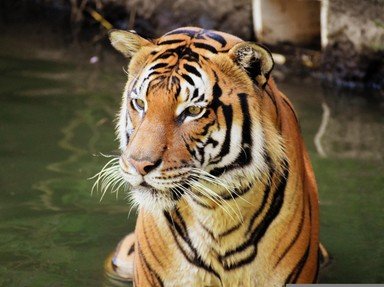Quiz Answer Key and Fun Facts
1. With a nickname of "Uncle Stripes", which animal is the national animal of Malaysia?
2. Which of the following critically endangered creatures is considered to be the largest tree-living mammal in the world?
3. How does the Sumatran rhinoceros assist with plant biodiversity?
4. What type of creature is the rhinoceros hornbill?
5. When faced with a threatening situation, what technique does a Sunda pangolin usually choose to protect itself?
6. The Borneo pygmy elephant is so named because it is a domesticated breed of elephant raised by the local pygmy population and not because of its size.
7. Which lucky member of the bat family was entered on the IUCN Red List of Endangered species in 2015 because there was not enough data to determine its level of risk for extinction?
8. Which of the following is NOT true of the vulnerable sun bear?
9. What type of animal is a banteng?
10. What fact, which resulted in its nickname the "Oreo tapir", sets the Malayan tapir apart from other tapir species?
Source: Author
Fifiona81
This quiz was reviewed by FunTrivia editor
rossian before going online.
Any errors found in FunTrivia content are routinely corrected through our feedback system.
